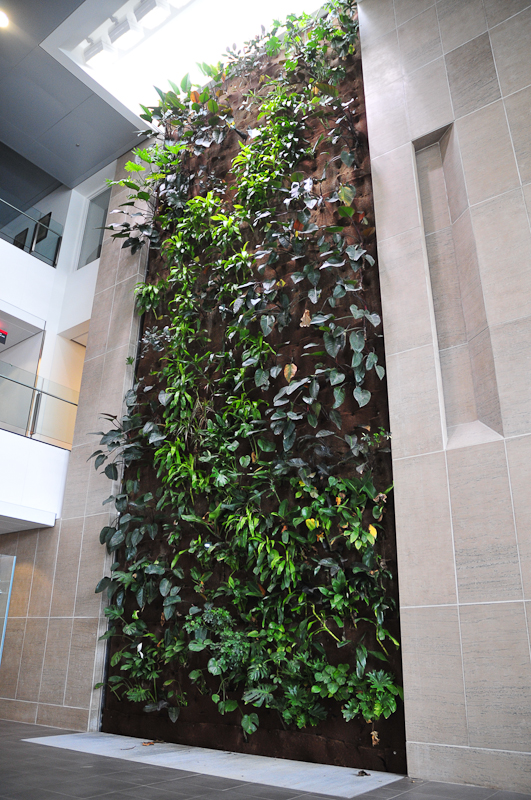Pay three years of tuition, buy a nice car, or maintain a plant wall at Carleton—they all cost about the same.
The “living wall” in the atrium of the River Building costs about $18,000 a year to maintain, according to Darryl Boyce, Carleton’s assistant vice-president (facilities management and planning).
The key element of this wall—and where the price tag comes from—is the watering system.
The plants are required to have water constantly pumping through them, Boyce said. There’s even a backup generation in case the power goes out.
“There’s no soil, it’s just roots. So they have to have a continuous flow of water that’s got the right amount of nutrients in it,” Boyce said.
But the school is encountering some extra costs from an unexpected number of plant mortalities.
Normally, about 10 to 15 per cent of the plants on a living wall will die in a year. But Carleton’s plant wall is losing about 25 per cent of its plants a year. Those extra deaths are costing the school an extra several thousand dollars a year, Boyce said.
It has to do with how the lights in the River Building atrium are installed and aimed, he said.
“We’re having a bit of a problem with the lighting and the way it’s been set up,” Boyce said. “We’re monitoring that right now to try to find out where we have problems with the amount of light.”
The plant wall was under a one-year warranty following the construction of River Building. However, now the costs of maintaining the wall are the university’s.
“It’s our first one we’ve installed. We’ve always had some concerns about living walls in terms of their maintenance,” Boyce said. “But you really don’t know whether it’s a good idea or a bad idea until you try it.”
But plant wall lovers, there’s no need to fear.
“Unless it costs a lot more money every year, it would be difficult for us to remove it, because of what it adds to the space,” he said. “People like it.”
“If it escalated that it was two or three times what we’re spending now, well we might say, ‘Oh gosh, it’s not worth keeping it.’ But it would have to be somewhat more dramatic than what we’re seeing today.”
Boyce said this is also a test to see if future plant walls should be installed at Carleton.
“It’s a bit of an experiment for us as an institution, to see how expensive it is to operate and assess the value of it after five or six years,” he said. “Do we build another one somewhere? That’s the big question.”
Related articles:






